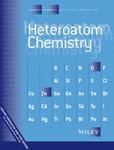Self-Assembled Heteroleptic Zn(II) Dithiocarbamate-Based 2D-Interwoven Supramolecular Giant Macrocycles and Their Redox Properties
Contract grant sponsor: Higher Education Commission of Pakistan.
Contract grant sponsor: Quaid-i-Azam University.
ABSTRACT
This article presents a new heteroleptic Zn(II) dithiocarbamate (1) having molecules linked together via H···H and π···π interactions to form a giant hexanuclear macrocycle. These macrocycles are connected together through S···H interactions to offer a unique two-dimensional cloth-like interwoven architecture in the solid state. The redox behavior of the complex deposited on the surface of a glassy carbon electrode was investigated in different pH media. The analyte was found to oxidize and reduce in a pH-dependent irreversible manner. On the basis of the electrochemical findings, redox mechanistic pathways were proposed.




